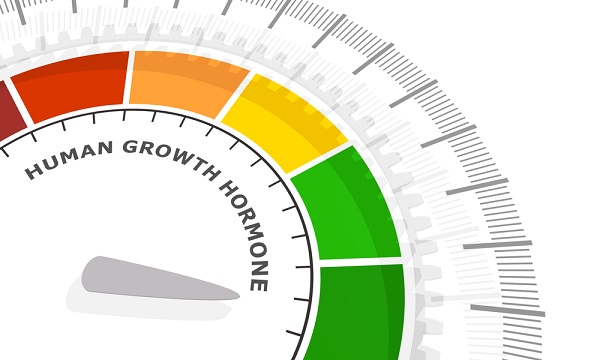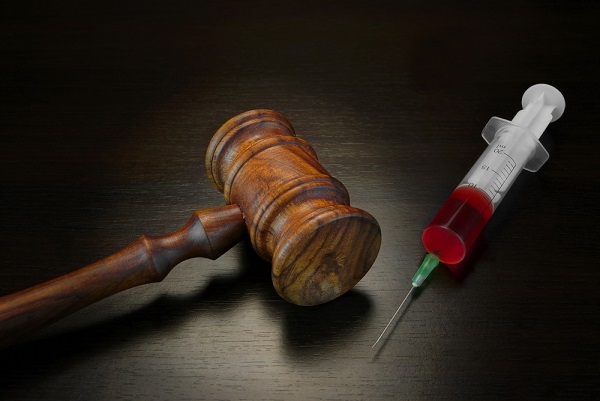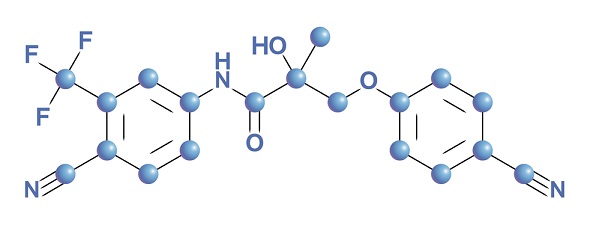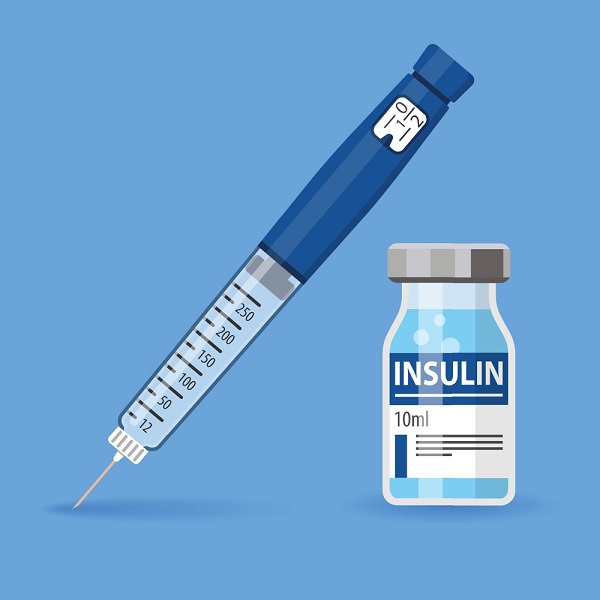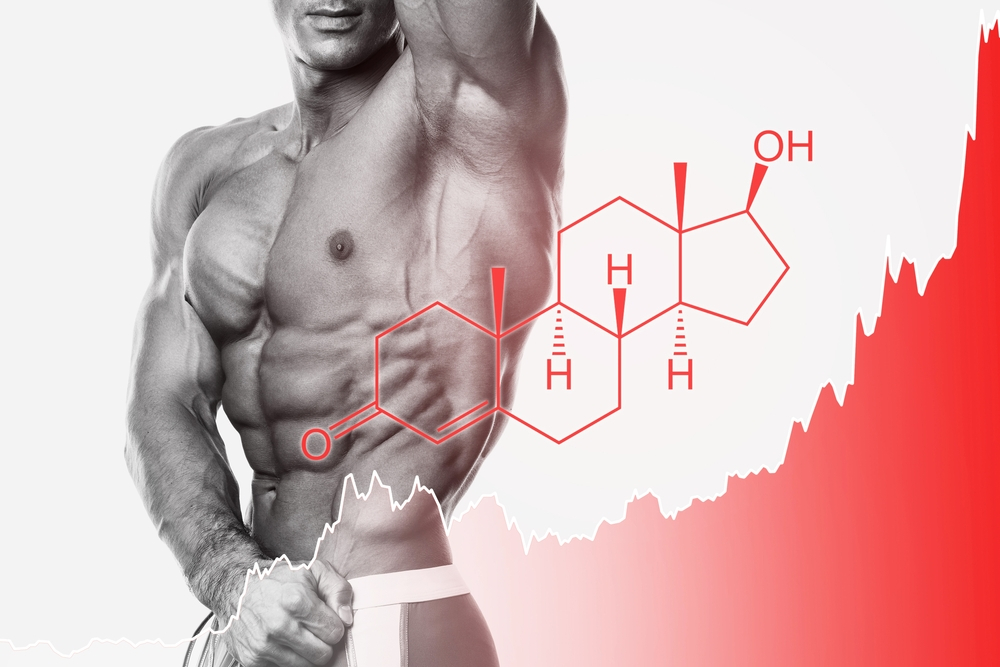
What Does Taking Growth Hormone Do?
Growth hormone is produced by our brain’s pituitary gland to help maintain, build, and repair healthy tissue in the brain and other organs. This hormone facilitate quicker wound healing and muscle recovery following exercise. This promotes metabolism, fat burning, and muscle growth.
GH has both direct and indirect effects. The HGH protein directly promotes anabolism and lipolysis by attaching to receptors in bone, muscle, and adipose tissues (fat loss).
Additionally, growth hormone directly improves the liver’s ability to produce glucose (gluconeogenesis) and causes insulin resistance by inhibiting the hormone’s ability to work in target cells. IGF-1 (insulin-like growth factor), which is produced in the liver and nearly all other tissues in response to growth hormone, plays a significant role in mediating the indirect effects. Additionally anabolic to bone and muscle, IGF-1 increases growth hormone’s activity. But lGF-1 also has actions that are directly opposed to GH. This entails increased glucose absorption, increased lipogenesis (fat retention), and decreased gluconeogenesis.
Our height, bone length, and muscular growth are all regulated by this hormone, which is produced by the pituitary gland in our brain. In the false notion that using synthetic HGH can help them gain more muscular mass and strength. Abuse of HGH can result in acromegaly, an untreatable illness marked by the expansion of bones in the hands, feet, and face. GH has limited benefits because any muscular growth is the result of fluid retention. Negative consequences might also have a big impact.
treatment for growth hormone deficiency
Recombinant human growth hormone (rhGH) is the primary treatment for growth hormone (GH) deficiency-induced short stature, as well as the associated abnormalities in body composition, metabolic profile, exercise capacity, and quality of life. Challenges to effective treatment include difficulty in establishing a firm diagnosis of GH deficiency and variable responsiveness to rhGH within the population diagnosed with GH deficiency.
natural growth hormone
Diet and lifestyle can significantly affect your HGH levels. Follow these 6 steps to increase your HGH.
- Lose body fat: The amount of belly fat you carry is directly related to your HGH production.
- Fasting: Fasting leads to a major increase in HGH levels.
- Reduce Sugar Intake: Refined carbs and sugar raise insulin levels the most, so reducing your intake may help optimize GH levels.
- Low Consumption Of Food Before Sleep: a high-carb or high protein meal may spike your insulin and potentially block some of the HGH released at night
- Exercise: High intensity exercise increases HGH the most
- Get Enough Rest: The majority of HGH is released in pulses when you sleep.
Types Of HGH
1. CJC-1295 (DAC GRF, Drug Affinity Complex GRF)
CJC-1295 is a slow acting GHRH analog. its half-life is between 8 and 10 day. This is because of its strong propensity for isolating with the binding protein serum albumin.
CJC-1295 is in injection or IV infusion form. This drug has not been approved for use in humans.
For bodybuilding purposes, this HGH is typically given in doses of 1000–2000 mcg (1-2 mg). 1-2 times a week. Although programmed of 6 months or more are not unusual as well. Cycles typically last three to four months. Significant antibody development (which might lessen the effectiveness of CJC1295) did not occur during tests with this medication. This implies that, if desensitization does develop, it is unlikely to happen quickly.
CJC1295 Side Effects:
This medication may result in redness, itchiness, soreness, or lumps at the injection site when administered subcutaneously. In one trial, almost 70% of participants who received a subcutaneous injection of CJC-1295 experienced injection site responses. This medication may make it harder to tolerate glucose and increase blood sugar levels. People without diabetes or poor glucose tolerance may experience this.
2. Egrifta (tesamorelin acetate)
This medication imitates the action of natural GHRH. It works by stimulating the pulsatile release of GH, a key regulator of metabolism and body composition, from the pituitary. 2mg of tesamorelin daily for 2 weeks was shown to significantly increase serum GH levels.
The dosage of egrifta in bodybuilding is usually 1-2 mg per day. Egrifta often causes a noticeable decrease in fat mass and a slight rise in lean body mass.
Although cycles of 6 months or more are not unusual, they typically last 3 to 4 months. About 50% of individuals taking this HGH exhibited antibody development, However the presence of these antibodies had no appreciable clinical impact on GH release.
Egrifta Side Effects:
In general, side effects are mild. Some of the most common side effects are water retention, joint pain, carpal tunnel syndrome, and numbness or tingling in the limbs, which affected 25.6% of patients. Remember that GHRP therapy appears to have a lower incidence of GH-related adverse effects than conventional HGH does. This is because endogenous synthesis has limits on GH/IGF-1 release, making the medicine less prone to overdose.
3. Geref (sermorelin acetate)
Sermorelin acetate attracts to athletes for the same reasons as recombinant HGH does. GH, among other things, has anabolic and catabolic characteristics. Strength, energy levels, and connective tissues may all be improved along with new muscle tissue growth in the presence of elevated GH levels. GH is a strong fat loss modulator. Growth hormone’s benefits for physique and athletic performance are well acknowledged in the competitive bodybuilding and athletic circles, making HGH medicines quite common.
For bodybuilding purposes Sermorelin acetate is administered by subcutaneous injection. Usually given before bed, the dosage is between 0.2 and 0.5 mg (200 and 500 mcg) per day.
Studies indicate that taking this medication twice day may increase its effectiveness. As a result, it is frequently preferable to provide the entire daily dosage twice, once in the morning and once in the evening. Sermorelin acetate cycles typically last 8 to 12 weeks.
Geref Side Effects:
The most common side effects to geref therapy are injection site reactions such as pain, redness, and swelling. During clinical trials, this occurred in approximately 17% of patients. Less common side effects include difficulty swallowing, itching, dizziness, flushing, headache, nausea, vomiting, altered sense of taste, restlessness, and sleepiness.
4. Hexarelin (Examorelin)
Hexarelin is in different forms of oral, injection or IV infusion. Injection is largely the only method of administration due to its high cost and low bioavailability through other methods.
Human usage of this medication is not authorized.
Hexarelin is often injected at a dosage of 0.05 to 0.2 mg (50-200 mcg) for bodybuilding purposes. This can be administered once or twice every day. This is administered before bed if single episode dosing is chosen. If used, the day dose is taken 30–60 minutes before a meal, on an empty stomach. This helps to maintain optimal GH release since GHRPs may not raise GH as much when plasma fatty acids and/or glucose are high. The maximum daily dose is typically 400 mcg.
It is common to taper up the dosage, beginning with only 50 mcg per irnjection. This may be increased by 50 mcg every several days, until a stable peak dosage is reached.
Over time, the body becomes less sensitive to Hexarelin’s GH-raising effects. Because of this, cycles are often only 4 weeks long. This period of time was picked out of extreme care. Desensitization does occur after 4 weeks of use and before 16 weeks, according to one study that looked at the topic. Longer cycles may be employed without experiencing a major downregulation, which is very conceivable.
Hexarelin Side Effects:
Flushing, sweating, drowsiness, decreased REM sleep, increased GI motility, and increased hunger are typical side effects of hexarelin treatment. Adverse effects common to other forms of GH therapy, such as water retention, joint discomfort, carpal tunnel syndrome, and numbness or tingling in the extremities, are also possible. Remember that GHRP therapy likely to have less adverse effects than conventional HGH does. This is because endogenous synthesis affects GH/IGF-1 release, making the medicine less prone to overdose.
5. HGH Fragment 176-191
HGH Fragment 176-192 is a truncated polypeptide consisting of the 16 amino-acid terminal chain of HGH. It is in injection form.
HGH Fragment 176-191 is often injected at a dosage of 0.25 to.5 mg (250–500 mcg) when used to enhance physical appearance. This may be administered 1-2 times a day, typically before food. One dose is normally administered 30 to 60 minutes before engaging in cardio exercise, which could enhance the benefits of the drug on fat reduction.
The maximum daily dose is often 1,000 mcg. HGH Fragment 176-191 cycles typically last two to three months, while lengthier regimens are not unusual.
HGH Fragment Side Effects:
The most common side effects to HGH Fragment 176-191 include sleepiness and lethargy. Injection site reactions are also highly prominent. The subcutaneous administration of this drug may cause redness, itching, pain, and/or lumps at the site of injection.
6. Somatropin (Human Growth Hormone)
In the worlds of bodybuilding and sports, somatropin is popular anabolic and performance-enhancing substance. The precise degree of possible advantage that this drug carries is the main topic of discussion. Studies proving potentially potent anabolic and anticatabolic benefits in healthy people and athletes are limited, despite the fact that studies with HIV+ individuals in a wasting state tend to substantiate these claims.
Although the substance can enhance increased athletic performance, strength improvements, and muscle growth, its side effects are typically less severe than those of anabolic/androgenic steroids. However, somatropin can enable a highly skilled athlete or bodybuilder push their body and performance further than could have been achievable with steroids alone.
Dosage for bodybuilding purposes are between 1 and 6 IU per day (2-4 IU being the most frequent). Similar to anabolic/androgenic steroids, the medicine is frequently cycled, with the average duration of consumption falling between 6 and 24 weeks.
The lipolytic (fat reduction) benefits of this medication are more readily noticeable than its anabolic effects, which often take longer to develop and require higher doses.
Somatropin is frequently used with other medications to produce a more potent reaction. Given the known effects of somatropin on thyroid levels, thyroid medications are particularly popular and may greatly increase fat loss during treatment. Insulin is also commonly used wit h somatropin.
Somatropin Side Effects:
The most common side effects of somatropin therapy are joint pain, headache, flu-like symptoms, water retention and back pain. Less common adverse reactions include dizziness, upper respiratory infection, bronchitis, tingling or numbness on the skin, reduced sensitivity to touch, nausea, sore bones, carpal tunnel syndrome, chest pain, depression, gynecomastia, hypothyroidism, and insomnia.
7. Ipamorelin
lpamorelin is a GH secretagogue from the GH RP class (GH Releasing Peptides). Injection is the most common way to administer this medication.
Dosage of 0.2 to 0.3 mg (200-300 mcg) up to 3 times a day is common for bodybuilding purposes. When taking this for a single episode, a greater dose (up to 500 mcg) is occasionally administered right before bed. The day dose(s) should be consumed 30–60 minutes before a meal, on an empty stomach. This is done to maintain optimal GH release since GHRPs may not raise GH as much when plasma fatty acids and/or glucose are high. The maximum recommended daily dose is often 900 mcg.
Ipamorelin Side Effects:
Common side effects to ipamorelin include flushing, sweating, headache, increased GI motility, and sleepiness.

